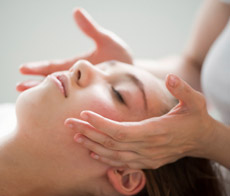Or after a more focused, therapeutic session: “Oh my gosh, I am SO relaxed” (followed by a sheepish look, as if that wasn’t supposed to happen and the client seems almost embarrassed to have let themselves relax).
Why “just” a relaxation massage? Why the chagrin over that fabulous, feel-good loopiness after you rise from the massage table and float out the door? Relaxation is one of the rare gifts that a therapist can give to their clients (how many times have you left, say, the dentist’s office or your primary care doctor’s office feeling that way?), but it is also valuable and beneficial for your body and your mind in ways that go far beyond just that initial “massage head:” euphoric feeling.
When the body is relaxed, when trust between therapist and client has been built, when the parasympathetic nervous system (the “rest and digest” state, as opposed to the highly anxious “fight or flight” sympathetic state) kicks in—this is when real healing begins. All those frenzied, rapid-fire thoughts that swing from one to the next—what Buddhists call your “monkey mind”—slow down to a calming purr. You can feel your muscles let go of some of the tension they have been holding, and this in itself creates benefits that you can feel, but this foundation of relaxation in a more focused, stuctural massage session also allows your therapist to manipulate your soft tissues more effectively and more comfortably for you. Further, it’s believed that relaxation as result of massage increases your systemic circulation, decreases your respiratory rate, that it promotes feelings of well-being and enhances the mind-body connection as well as lifts mood. What’s not to love?
In a recent randomized, controlled trial, both relaxation massage and more specific “structural massage” were studied as treatment for chronic low back pain. Not only did the results demonstrate that massage therapy improved function and decreased pain in participants with low back pain after 10 weeks, it also showed that a course of relaxation massage alone “had effects similar to those of structural massage. Both types of massage were associated with improved function at 26 weeks.” (Cherkin et al, 2011). The study also credited the results with possible nonspecific effects such as “time spent in a relaxing environment, being touched, receiving care from a caring therapist, being given self-care advice, or increased body awareness.” All of these are wonderful components of the work of massage, and, in my opinion, deserve to be celebrated.
It’s easy to think of taking time to relax as “doing nothing.” For some, if their massage therapist isn’t making them hurt for the whole session (“no pain, no gain”), then it’s just a “fluff and buff” and a “waste of time.” It’s okay to appreciate the softer side of massage—to recognize and relish in the specific, tangible results that come from specific, deep, focused work but to also unabashedly languish in those Swedish “dessert strokes” that make you melt. Enjoy the relaxation benefits, and walk out of your therapist’s office wearing your “massage head” with pride.
Source: “A Comparison of the Effects of 2 Types of Massage and Usual Care on Chronic Low Back Pain.” Daniel C. Cherkin, PhD; Karen J. Sherman, PhD, MPH; Janet Kahn, PhD; Robert Wellman, MS; Andrea J. Cook, PhD; Eric Johnson, MS; Janet Erro, RN, MN; Kristin Delaney, MPH; and Richard A. Deyo, MD, MPH. Annals of Internal Medicine, July 5, 2011, Vol. 155, No. 1, 1-9

 I’ve heard this a few times before a massage session: “I just want a relaxation massage today. Nothing major.”
I’ve heard this a few times before a massage session: “I just want a relaxation massage today. Nothing major.”